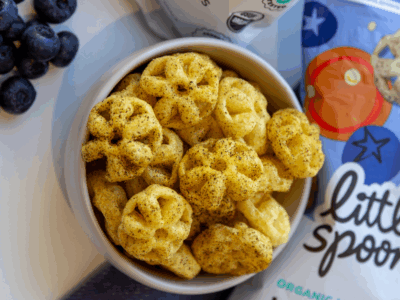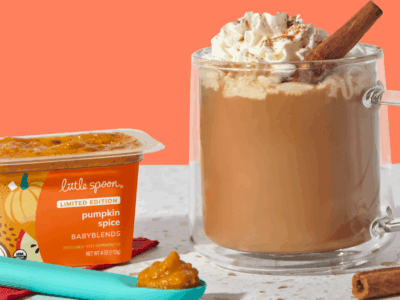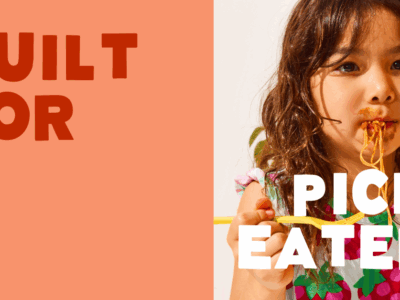There’s so much learning that comes with parenting and feeding your baby is no different! We sat down with two pediatric occupational therapists and seasoned moms to get the rundown on transitioning your little one to finger foods.
What is a finger food?
First, let’s start with the basics! A finger food most simply is anything you or your baby can pick up and eat. Essentially it’s not a puree or a food that can easily be delivered by spoon. Depending on your approach to offering solid food, your definition may vary. However, finger foods can range from a hard meltable (such as a baby puff or a baby rice cracker) to a soft solid (such as cubed, ripe, raw avocado/banana, soft berries, to steamed or braised carrots) to something your little one can hold in their hand and gnaw on (such as a roasted sweet potato).
When do I start finger foods?
Finger feeding is a fun new way to foster independence and choice with your baby after they have started to show some success with introducing pureed solids. There is an age range when a baby can demonstrate readiness for finger feeding, but rather than have a set age in mind, a helpful first step is to consider where your baby is with regards to their developmental skills and interest.
What skills do they need beforehand?
As finger feeding is comprised of many different movement and sensory skills (posture, arm control, finger use, oral movements, discrimination of texture), here are some skills to look out for:
Large and small motor skills:
- Sitting independently and starting to reach with accuracy without tipping over. No more leaning, slumping, and the head can look out and up.
- Can start to use their fingers in a raking motion (fingers closing and opening repetitively) to touch, pick up, and secure an object against their palm.
Sensory skills
- Has accepted and gotten used to a repertoire of tastes and textures on their hands and mouth.
Oral Motor skills (movements of the mouth):
- Food stays IN the mouth versus getting pushed out with the tongue and lips.
- Jaw starts to move up and down in a small munching pattern.
- Keeps lips closed and starts to curl top lip while taking food off the spoon.
- Tongue is able to move side to side around the mouth.
So how do you start finger foods?
Several considerations come to mind. First off, be sure you have a supportive high chair or seat that positions the baby such that they can independently access the food you offer with their hands. Additionally, offer something that you would also want to eat, something appetizing! Then, dig in along with them. Model for them how to pick up, bring to mouth, bite, mash/chew, and swallow the finger foods. Exaggerate these motions with your mouth and face. Be sure to offer finger foods when your baby is awake and alert as finger foods can be a novel motor and sensory challenge. Closely monitor your baby for signs of disinterest and discontinue feeding when your baby is no longer engaged or having fun. Finger foods can be offered in combination with other more familiar foods/purees during this initial transition. And remember, relax and take the stress out of eating! It will lead to a better experience for the whole family.
Learn more about Victoria + Danielle’s work at www.babymattersot.com or follow them on Instagram @babymattersot.



